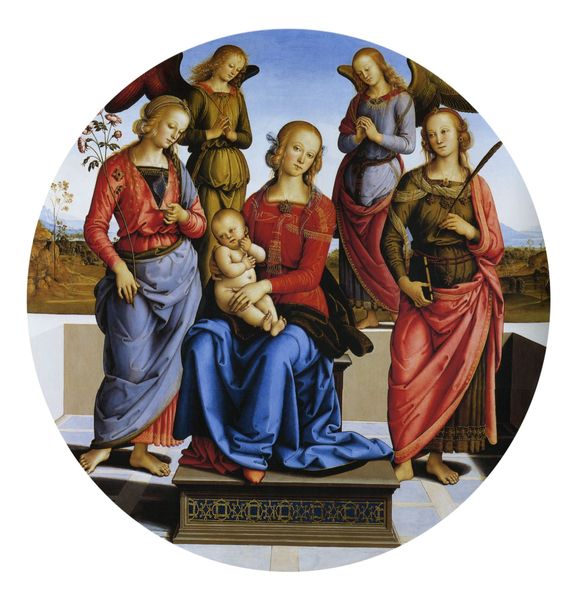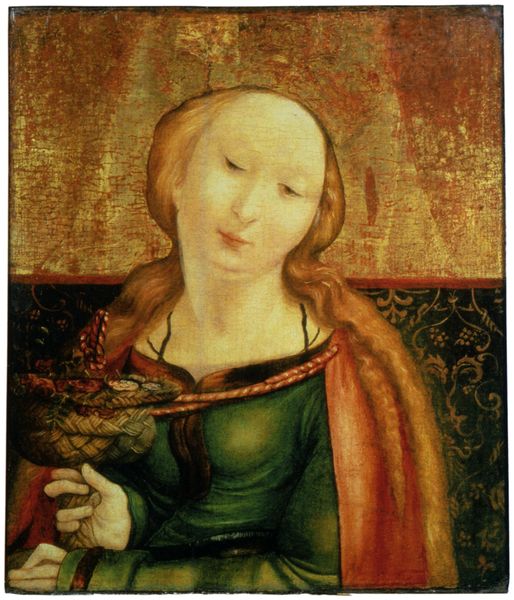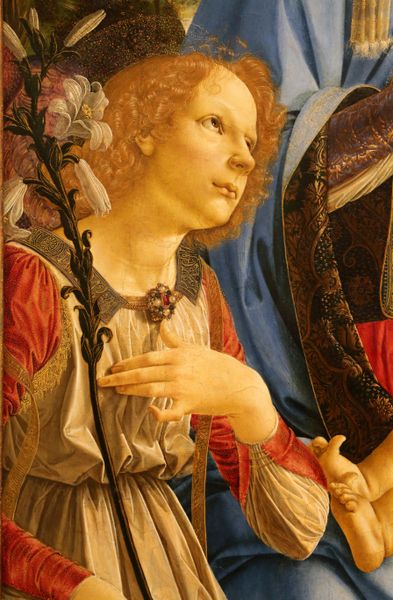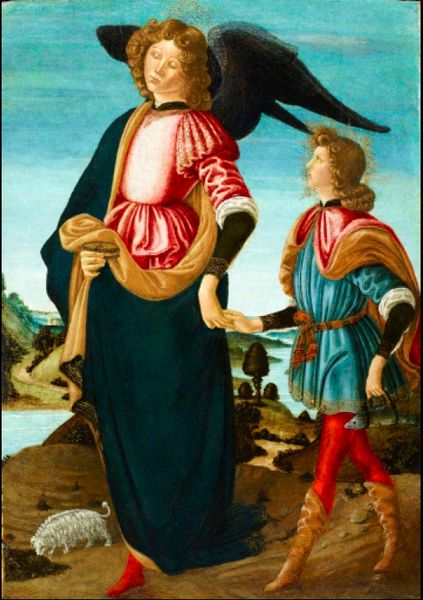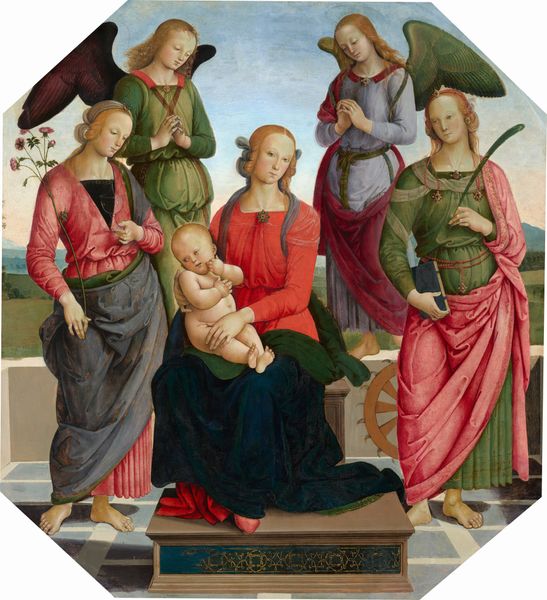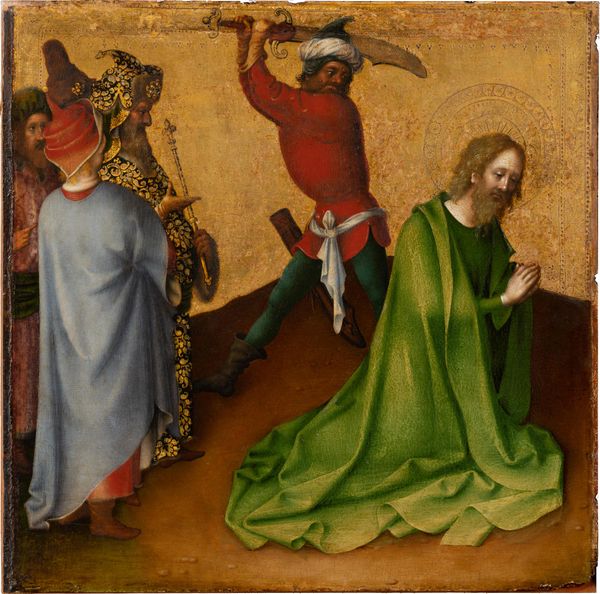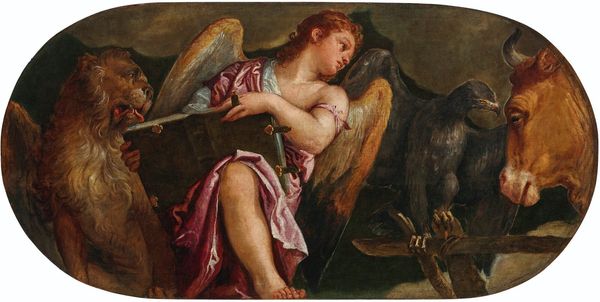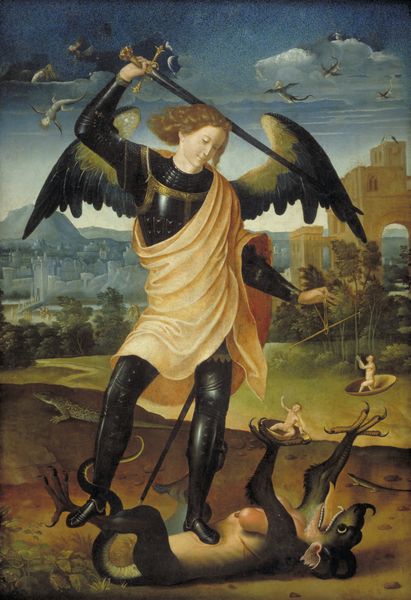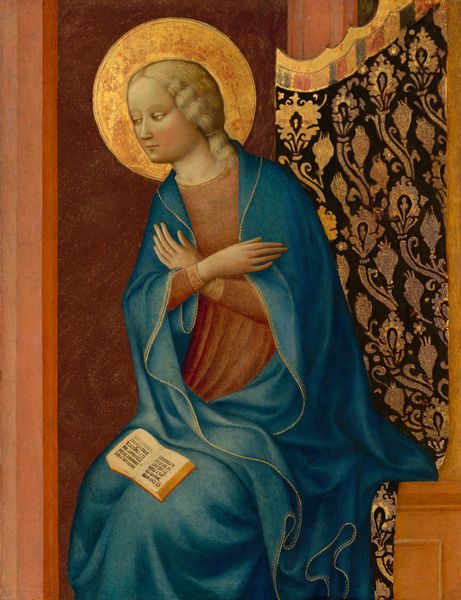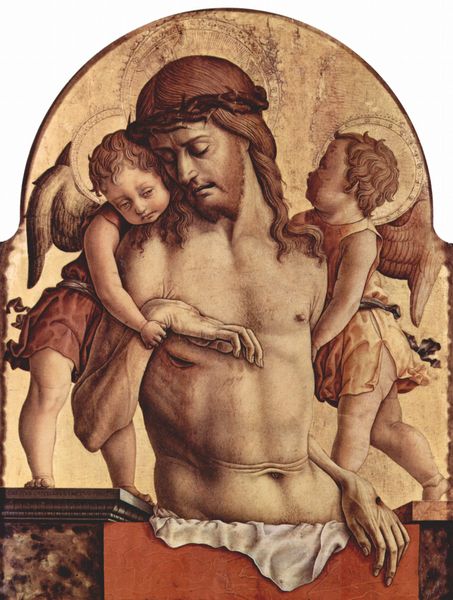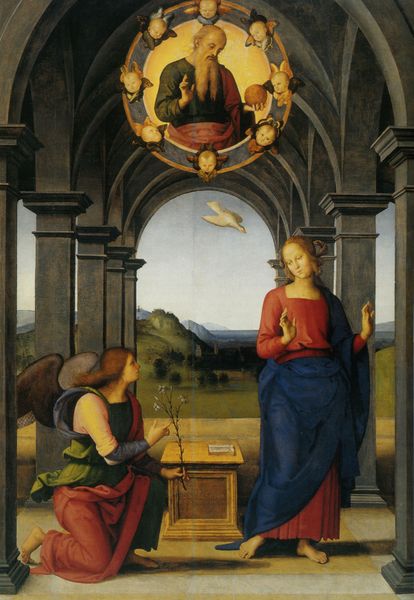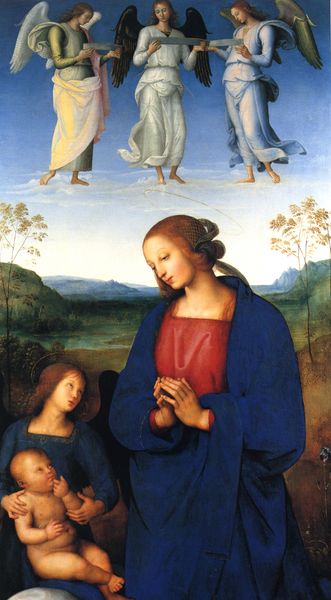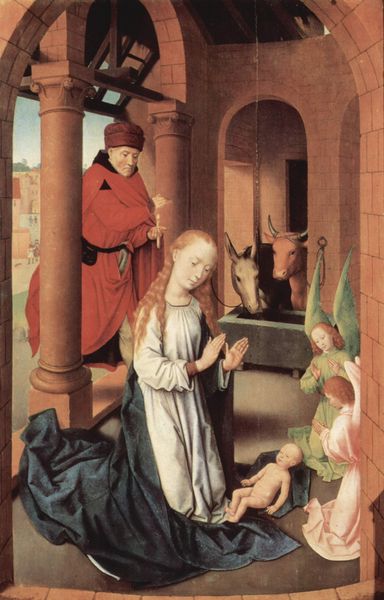
painting, oil-paint
#
portrait
#
painting
#
oil-paint
#
figuration
#
oil painting
#
italian-renaissance
#
early-renaissance
#
angel
Copyright: Public domain
Curator: Here we see a portion of Pietro Perugino's "Pala di Sant'Agostino," specifically, his depiction of the Archangel Gabriel, painted in 1523, rendered in oil. Editor: My first thought is of melancholic grace. It feels restrained, somehow, almost hesitant. It's not the triumphant angel I'm used to seeing. More like an introvert tasked with delivering really important news. Curator: Yes, that somber tone marks a fascinating shift. Perugino was already a well-established master, but by the 1520s, tastes were changing. There was a turn away from the early Renaissance optimism toward more emotionally complex and sometimes darker representations. You see hints of Mannerism starting to creep in. Editor: You can definitely see that. Those colors aren't singing. That red and green...are a bit jarring. Though the lilies, such simple elegance. But look at the angle of the hand—so precise it looks almost like a gentle, instructive gesture, as if to indicate a path forward, despite everything. Curator: Absolutely. That's classic Renaissance humanism, even here. It reaffirms earthly experience and observation within even religious contexts. The art patron, and the church as a whole, became a very important influence as artists needed to adhere to what the commissioner expected while adding their own personal artistry and innovation. Editor: I always wonder if Perugino himself felt that tension— the patron’s expectations versus his artistic impulse. Did he feel stuck in the old ways, or excited by these nascent changes? I mean, that face holds so much unspoken thought; is it a reflection of inner change? Curator: That's one of the beautiful, unanswerable questions when we look at paintings such as this. We see societal shifts, power dynamics, and artistic movements—but within them there is always the potential for human ambiguity. Editor: Ambiguity is what keeps us coming back. Thanks, Perugino.
Comments
No comments
Be the first to comment and join the conversation on the ultimate creative platform.
